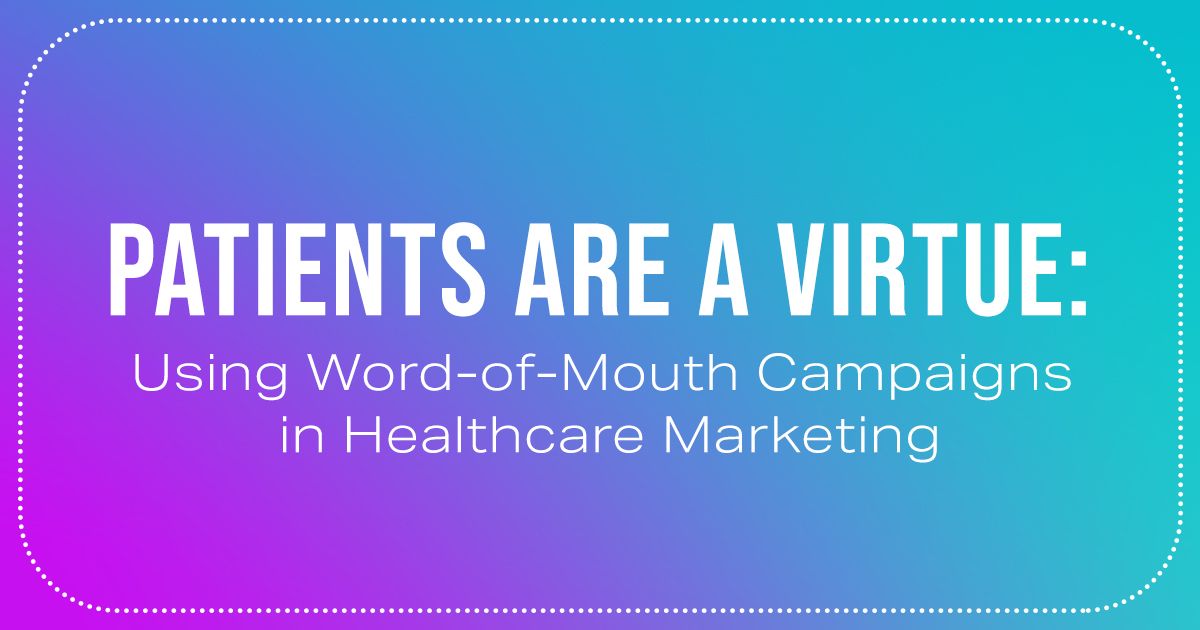The healthcare industry is in the midst of a shakeup. Fee-for-service models are shifting to value-based care, challenging hospitals to provide the best quality care at the most reasonable cost. With the healthcare industry moving toward patient preference, hospitals suffering from poor reputations and low-quality scores face even tougher competition from those known for safety and quality. And population health programs are being implemented throughout the primary care and health insurance industries in an effort to keep patients out of the hospital entirely.
Hospitals now have to work harder than ever to stay solvent—and relevant—among healthcare consumers. When patient volumes decrease, many hospital executives start running scared. Often, their initial reflex is to throw money into marketing to convince physicians, practitioners, and patients that their hospital is the best choice for treating illnesses that must be managed in a clinical setting. Hospitals use a combination of marketing tactics such as:
- Beating the pavement with physician liaisons.
- Building responsive websites for patients to easily digest content.
- Using social media to push the hospital's message.
- Using more traditional tactics like billboards, radio, television, and print advertising.
While these tactics can produce results, just as often they fail because hospitals forget the most important element: the patient's voice and perspective. Even in the digital age, word-of-mouth, one of the oldest forms of marketing, is still one of the most effective—especially in healthcare.
While there are many avenues to obtain information about hospitals and healthcare providers, nothing outweighs a recommendation from a family member, a positive reference from a close friend, or even the real-life experience of a complete stranger who may have a similar condition. Studies show that word-of-mouth is a vital factor in hospital selection. According to a study by the Pew Research Center, about 60 percent of people choose a new doctor or hospital based on recommendations from friends and family.
The goal of word-of-mouth marketing in healthcare is to convey patient experiences in a clear, authentic, credible, and engaging way that resonates with potential patients. For example, when someone looks up treatment information about their condition, similar stories on the compassionate care provided by a hospital or physician could lead them to request more information or schedule an appointment. Word-of-mouth referrals can come from online reviews, social media posts, search engine ratings, video reviews, written testimonials, and articles describing patient experiences.
Here are 5 steps for hospitals to use word-of-mouth marketing to establish relationships with patients and partner with them to create brand advocates:
- Get buy-in from senior hospital leadership. Buy-in from senior leadership demonstrates that the program has support, funding, and a long shelf life.
- Make word-of-mouth marketing part of your overall marketing strategy. In marketing, it’s impossible to know if something will work if it’s only tried once. Instead, think long-term about how sustained word-of-mouth marketing can benefit your hospital’s overall return on investment (ROI). Taking this approach to word-of-mouth marketing ensures that it won’t be overlooked among other priorities and tactics. Instead, it integrates with and strengthens your larger marketing strategy.
- Collect feedback and follow-up. Establish a program for patients to easily provide feedback about their hospital stay and the care they received. Create feedback cards and train staff to make this a part of the discharge process so that feedback is collected consistently, from every patient. The feedback card should include messaging that informs the patient that they may receive a call from a patient advocate to learn more about their stay. If the patient agrees to participate, the marketing department can follow up to capture the patient’s story with a testimonial or first-person video, and add these assets to the marketing mix.
- Encourage patients to share their stories through their own social media channels. This creates an authenticity that brands can’t build on their own. It also allows the patient to share their story with family and friends, which can then continue to be shared with near-endless potential reach.
- Share patient stories. Use the stories collected from the feedback and follow up. Hospitals should share patient success stories with permission for media relations, on the corporate website and social media channels, and any other channel where consumers can obtain information.
Ready to start your hospital’s word-of-mouth campaign? Get in touch!
